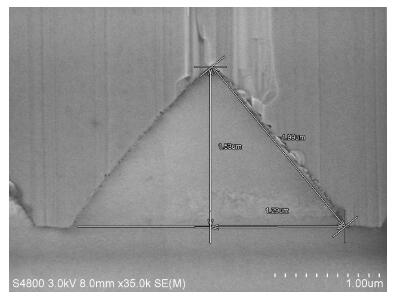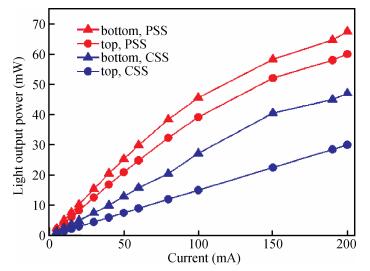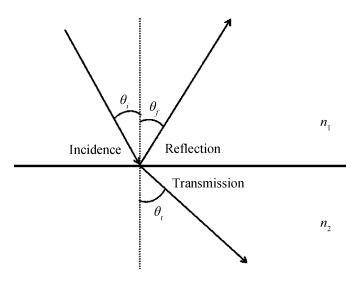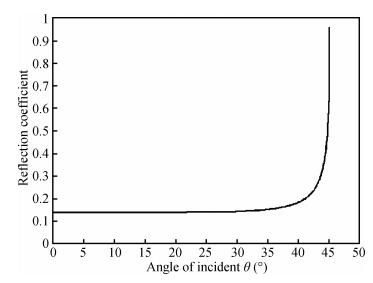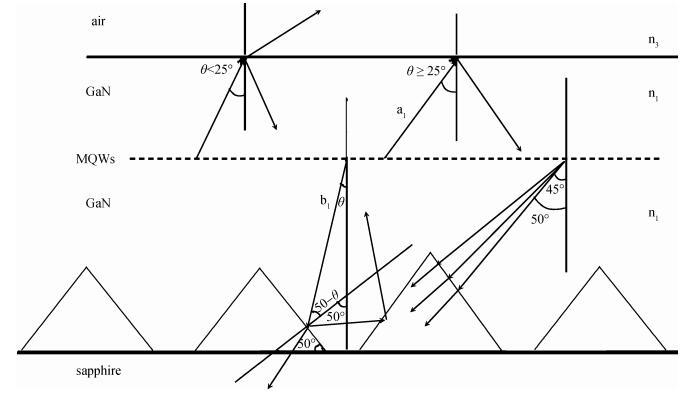| Citation: |
Dongxue Wu, Ping Ma, Boting Liu, Shuo Zhang, Junxi Wang, Jinmin Li. Increased effective reflection and transmission at the GaN-sapphire interface of LEDs grown on patterned sapphire substrates[J]. Journal of Semiconductors, 2016, 37(10): 104003. doi: 10.1088/1674-4926/37/10/104003
****
D X Wu, P Ma, B T Liu, S Zhang, J X Wang, J M Li. Increased effective reflection and transmission at the GaN-sapphire interface of LEDs grown on patterned sapphire substrates[J]. J. Semicond., 2016, 37(10): 104003. doi: 10.1088/1674-4926/37/10/104003.
|
Increased effective reflection and transmission at the GaN-sapphire interface of LEDs grown on patterned sapphire substrates
DOI: 10.1088/1674-4926/37/10/104003
More Information
-
Abstract
The effect of patterned sapphire substrate (PSS) on the top-surface (P-GaN-surface) and the bottom-surface (sapphire-surface) of the light output power (LOP) of GaN-based LEDs was investigated, in order to study the changes in reflection and transmission of the GaN-sapphire interface. Experimental research and computer simulations were combined to reveal a great enhancement in LOP from either the top or bottom surface of GaN-based LEDs, which are prepared on patterned sapphire substrates (PSS-LEDs). Furthermore, the results were compared to those of the conventional LEDs prepared on the planar sapphire substrates (CSS-LEDs). A detailed theoretical analysis was also presented to further support the explanation for the increase in both the effective reflection and transmission of PSS-GaN interface layers and to explain the causes of increased LOP values. Moreover, the bottom-surface of the PSS-LED chip shows slightly increased light output performance when compared to that of the top-surface. Therefore, the light extraction efficiency (LEE) can be further enhanced by integrating the method of PSS and flip-chip structure design. -
References
[1] Wang L, Zhang Y, Li X, et al. Partially sandwiched graphene as transparent conductive layer for InGaN-based vertical light emitting diodes. Appl Phys Lett, 2012, 101(6): 061102 doi: 10.1063/1.4742892[2] Zhang Y, Wei T, Wang J, et al. The improvement of GaN-based light-emitting diodes using nanopatterned sapphire substrate with small pattern spacing. AIP Advances, 2014, 4(2): 027123 doi: 10.1063/1.4867091[3] Kim H G, Na M G, Kim H K, et al. Effect of periodic deflector embedded in InGaN/GaN light emitting diode. Appl Phys Lett, 2007, 90(26): 261117 doi: 10.1063/1.2752777[4] Lee Y J, Hsu T C, Kuo H C, et al. Improvement in light-output efficiency of near-ultraviolet InGaN-GaN LEDs fabricated on stripe patterned sapphire substrates. Mater Sci Eng B, 2005, 122(3): 184 doi: 10.1016/j.mseb.2005.05.019[5] Wu D S, Wang W K, Wen K S, et al. Defect reduction and efficiency improvement of near-ultraviolet emitters via laterally overgrown GaN on a GaN/patterned sapphire template. Appl Phys Lett, 2006, 89(16): 161105 doi: 10.1063/1.2363148[6] Cui H, Park S H. Numerical simulations of light-extraction efficiencies of light-emitting diodes on micro and nanopatterned sapphire substrates. Micro Nano Lett, 2014, 9(12): 841 doi: 10.1049/mnl.2014.0373[7] Du C, Wei T, Zheng H, et al. Size-controllable nanopyramids photonic crystal selectively grown on p-GaN for enhanced light-extraction of light-emitting diodes. Opt Express, 2013, 21(21): 25373 doi: 10.1364/OE.21.025373[8] Yamada M, Mitani T, Narukawa Y, et al. InGaN-based near-ultraviolet and blue-light-emitting diodes with high external quantum efficiency using a patterned sapphire substrate and a mesh electrode. Jpn J Appl Phys, 2002, 41(12B): L1431[9] Tadatomo K, Okagawa H, Ohuchi Y, et al. High output power near-ultraviolet and violet light-emitting diodes fabricated on patterned sapphire substrates using metalorganic vapor phase epitaxy. Third International Conference on Solid State Lighting, 2004: 243[10] Wang C C, Ku H, Liu C C, et al. Enhancement of the light output performance for GaN-based light-emitting diodes by bottom pillar structure. Appl Phys Lett, 2007, 91(12): 121109 doi: 10.1063/1.2786015[11] Gao H, Yan F, Zhang Y, et al. Enhancement of the light output power of InGaN/GaN light-emitting diodes grown on pyramidal patterned sapphire substrates in the micro-and nanoscale. J Appl Phys, 2008, 103(1): 014314 doi: 10.1063/1.2830981[12] Cuong T V, Cheong H S, Kim H G, et al. Enhanced light output from aligned micropit InGaN-based light emitting diodes using wet-etch sapphire patterning. Appl Phys Lett, 2007, 90(13): 131107 doi: 10.1063/1.2714203[13] An Tielei, Sun Bo, Wei Tongbo, et al. Light-extraction enhancement of freestanding GaN-based flip-chip light-emitting diodes using two-step roughening methods. Journal of Semiconductors, 2013, 34(11): 114006 doi: 10.1088/1674-4926/34/11/114006[14] Pan J W, Tsai P J, Chang K D, et al. Light extraction efficiency analysis of GaN-based light-emitting diodes with nanopatterned sapphire substrates. Appl Opt, 2013, 52(7): 1358 doi: 10.1364/AO.52.001358[15] Lee J H, Oh J T, Kim Y C, et al. Stress reduction and enhanced extraction efficiency of GaN-based LED grown on cone-shape-patterned sapphire. IEEE Photon Technol Lett, 2008, 20(17-20): 1563[16] Skaar J. Fresnel equations and the refractive index of active media. Phys Rev E, 2006, 73(2): 026605 doi: 10.1103/PhysRevE.73.026605[17] Ding Q A, Li K, Kong F, et al. Improving the vertical light extraction efficiency of GaN-based thin-film flip-chip LED with double embedded photonic crystals. IEEE J Quantum Electron, 2015, 51(2): 1[18] Lee Y J, Kuo H C, Lu T C, et al. Fabrication and characterization of GaN-based LEDs grown on chemical wet-etched patterned sapphire substrates. J Electrochem Soc, 2006, 153(12): G1106 doi: 10.1149/1.2359701[19] Lee T X, Lin C Y, Ma S H, et al. Analysis of position-dependent light extraction of GaN-based LEDs. Opt Express, 2005, 13(11): 4175 doi: 10.1364/OPEX.13.004175[20] Chen Maoxing, Xu Chen, Xu Kun, et al. Thermal simulation and analysis of flat surface flip-chip high power light-emitting diodes. Journal of Semiconductors, 2013, 34(12): 124005 doi: 10.1088/1674-4926/34/12/124005 -
Proportional views





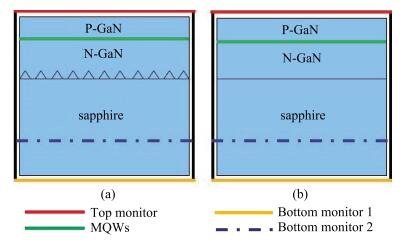
 DownLoad:
DownLoad:
